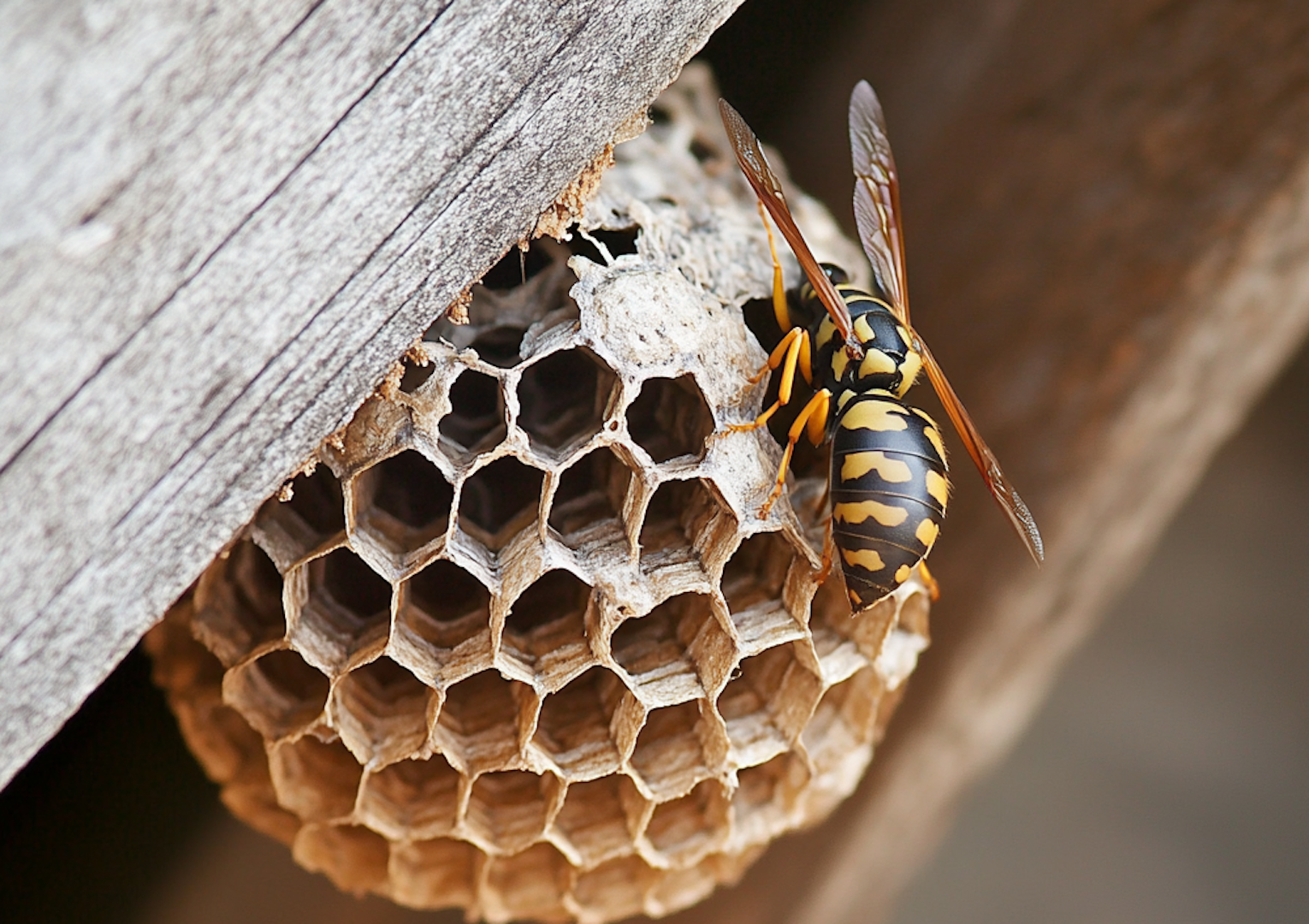Have you been noticing more wasps than ever on your property in Lehigh County? You’re not alone; increased wasp activity due to the warming climate has been spotted as far north as Canada.
With the summer months quickly approaching, you may notice an increased resurgence of various summertime pests, including ants, mosquitoes, and wasps. As the climate of the Lehigh Valley warms faster than any other region in Pennsylvania, more bugs are starting to infest properties, especially wasps and yellow jackets.
Wasps are some of the most feared insects for homeowners in the region, and for good reason. Not only do these pests have nasty stings that could hurt, but they can even trigger allergic reactions in people who are allergic to stinging insects.
If you’re dealing with a wasp nest on your property in the Lehigh Valley, here is everything you need to know about DIY wasp removal and stinging insect control to get rid of these nasty creatures this summer.

Common Types of Wasps in the Lehigh Valley
If you’ve ever spent time outdoors in the Lehigh Valley during the warmer months, chances are you’ve encountered a wasp or two. While some are relatively harmless and even helpful, others can be aggressive and pose a serious sting threat, especially when nesting near homes or high-traffic areas. Here’s a look at some of the most common types of wasps found in the region:
- Yellowjackets – Known for their bold black-and-yellow coloring and aggressive behavior, especially in late summer and early fall. They often build nests underground or in wall voids.
- Paper Wasps – These wasps have slender bodies with long legs and build open, umbrella-shaped nests under eaves and overhangs. They’re less aggressive than yellowjackets but will sting if provoked.
- Bald-faced Hornets – Despite their name, these are actually a type of wasp. They’re black with white markings and build large, enclosed paper nests, usually high up in trees or on buildings.
- Mud Daubers – These solitary wasps are known for their tube-like mud nests and are generally non-aggressive. They feed on spiders and rarely sting humans.
- Cicada Killer Wasps – These large, intimidating wasps target cicadas rather than people. They dig tunnels in sandy soil and are usually harmless unless directly handled.
Where Do Wasps Build Their Nests?
It’s important to know where wasps build their nests to spot a stinging insect infestation on your property.
Wasps tend to build their nests above ground where they can be protected, often in trees, shrubs, eaves, and sometimes attics. Certain wasps, like yellowjackets, may build their nests underground or underneath rocks or fallen logs.
You’ll be able to spot approximately where a wasp nest lies based on where you tend to see increased activity.
How to Identify a Wasp Nest
Wasps’ nests are different from traditional bee hives and even hornets’ nests, and may be harder to spot.
Wasp nests have a round, papery appearance and can resemble a balloon. They are typically made from chewed wood fibers mixed with saliva, giving them a unique appearance. There is usually one central hole in a wasp nest for entering and exiting, which can be helpful when trying to determine what kind of nest is on your property.
Dangers of Dealing with Wasps
While you may have spotted the gasoline trick on TikTok, wasps are incredibly dangerous and aggressive and should be handled with care.
Wasps are known to be aggressive when they feel they are being threatened, which is why dealing with a wasp nest on your property can be especially dangerous. Being stung by a wasp isn’t a pleasant experience for anyone, but their stings can also cause allergic reactions in some people.
While wasps typically do not swarm like other types of bees do, they may feel inclined to swarm if they feel that their nest is being threatened.
When to Remove a Nest (Timing Matters)
When determining when to remove a wasp nest, it is important to remember that timing matters. The best time to remove a wasp nest is in the late evening or early morning, when wasps are typically inside the nest and are less active. Before removing a wasp nest, it is important to ensure all of the wasps have left the nest to avoid being stung.
There are a number of ways to remove a wasp’s nest, from covering it with a garbage bag to spraying a deadly pesticide and even breaking it with a bat. Regardless of what method you choose, it’s essential that you protect yourself from being stung.
DIY Wasp Nest Removal: Safety First
If you decide to remove a nest yourself, you’ll need to wear personal protective equipment (PPE), such as a facemask, long sleeves, and long pants to protect your body from being stung.
If there is a wasp on your property that needs to be removed, we suggest hiring a professional exterminator. An experienced exterminator will be able to safely remove the wasp nest from your property without anyone getting stung and dispose of it later.
When to Call a Professional Exterminator
Whenever you’re dealing with an infestation of any kind, it is always wise to contact a professional exterminator rather than attempting to handle it yourself. Wasps are prone to aggression when they feel threatened, and interfering with their nests will almost always result in at least one sting.
Wasps may also return without a proper deterrent, such as a barrier spray, that will prevent them.
If you see a wasp nest on your property or they are getting into your house, contact a professional exterminator right away for instant relief.
Preventing Wasps from Nesting on Your Property
While preventing wasps from nesting on your property can seem impossible, there are a few things you can do to make your property less attractive to them.
Removing attractants can help deter these pests, such as getting rid of garbage, open water, and bright-colored flowers. You can also try using natural deterrents such as peppermint and citrus essential oils, as well as vinegar.
FAQs
When is wasp season in the Lehigh Valley?
Wasps are most active in the Lehigh Valley during summer, typically from June to September. This is commonly referred to as “wasp season” to the locals.
How can I tell if there’s a wasp nest on my property?
Wasp nests can be identified by their papery, round appearance, often resembling a balloon. There is also typically one central hole in the nest for entering and exiting. If you see something resembling this on your property, contact a pest control professional to have it assessed and removed.
Is it safe to remove a wasp nest on my own?
No, it is typically not safe to attempt to remove a wasp nest on your own. Wasps are known to be aggressive if they feel threatened, and attempting to remove their nest will likely result in them swarming and stinging you. It is always wise to leave wasp nest removal to a professional exterminator.



























